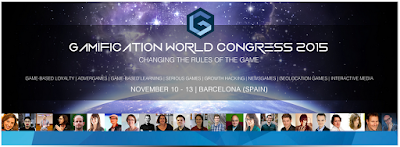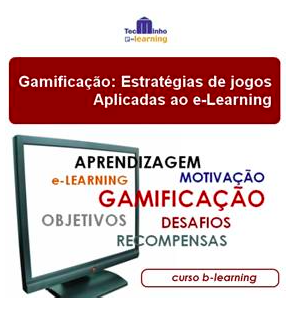2015 is near the end. 2015 is the year I finished my PhD, on November, 27th:
I hope to continue my research around gamification and e-learning in 2016.
For now, this is the thesis abstract:
This thesis addresses the problem of students’ disengagement by investigating if gamification can make a contribution to solve the problem and how. Gamification is a new
trend that aims to improve people’s engagement, motivation, loyalty or participation.
It started as a marketing tool but widespread to several different areas where peoples’
involvement is a key issue. Gamification is inspired by the success and popularity of
video games and looks for ways to use game’s features in non-game contexts, as a way
to drive game-like engagement.
While schools are struggling with the lack of motivation and engagement of many of their
students, technology is part of most children and teenagers lives in today’s societies.
They are heavy users of several media that, through mobile and wireless technologies,
are almost permanently present and available everywhere. Schools have to compete for
students’ attention and time and find the ways to use technology in their favour and
fill the gap between school and the outside technological world. Also, most of today’s
students are video game’s consumers. Games have been used in educational and training
scenarios for a long time. But building full-fledged games with learning purposes has
high implementations costs.
Gamification is a way to take advantage of the games’ power with lesser costs and effort. An initial research on gamification revealed that education was precisely one of the
main fields that could benefit from this new trend. As a main goal, the thesis proposes
a framework to help teachers using technology-enhanced learning environments powered
with gamification. It is expected that these environments can improve students’ behaviors towards school and learning. The framework also defines what should be the high
level architecture of gamified digital systems. This architecture is platform independent
and is proposed as a way to help developers in the implementation of gamified systems,
by highlighting what their main building blocks should be. Based on a broad literature
review, this thesis presents the most used game elements and game techniques found
in already existing gamified applications. A set of those elements and techniques were
included in the proposed framework.
Further research was needed to investigate the impact of gamification and how to measure that impact. The tendency to experience flow was chosen as a measure of engagement. Flow is a psychological state felt by people when they act with total involvement.
People can experience flow when performing an engaging task. A high tendency to
experience flow means high intrinsic motivation and a better engagement. The thesis
addressed these issues by conducting an empirical study with primary education young students. The study investigated if a social learning environment with gamification
tools would be more able to increase students disposition to experience flow than a non-
gamified version. In this experiment, some gamified learning activities were set following
the guidelines of the proposed framework.
The results from the empirical study showed that there was an improvement in the
students’ disposition for flow when using the gamified version of the social learning environment. The students’ average score had an increase and the statistical test taken
allowed to conclude that the average score increase has statistical significance.
Soon, the all thesis will be on-line.
Happy New Year!




















